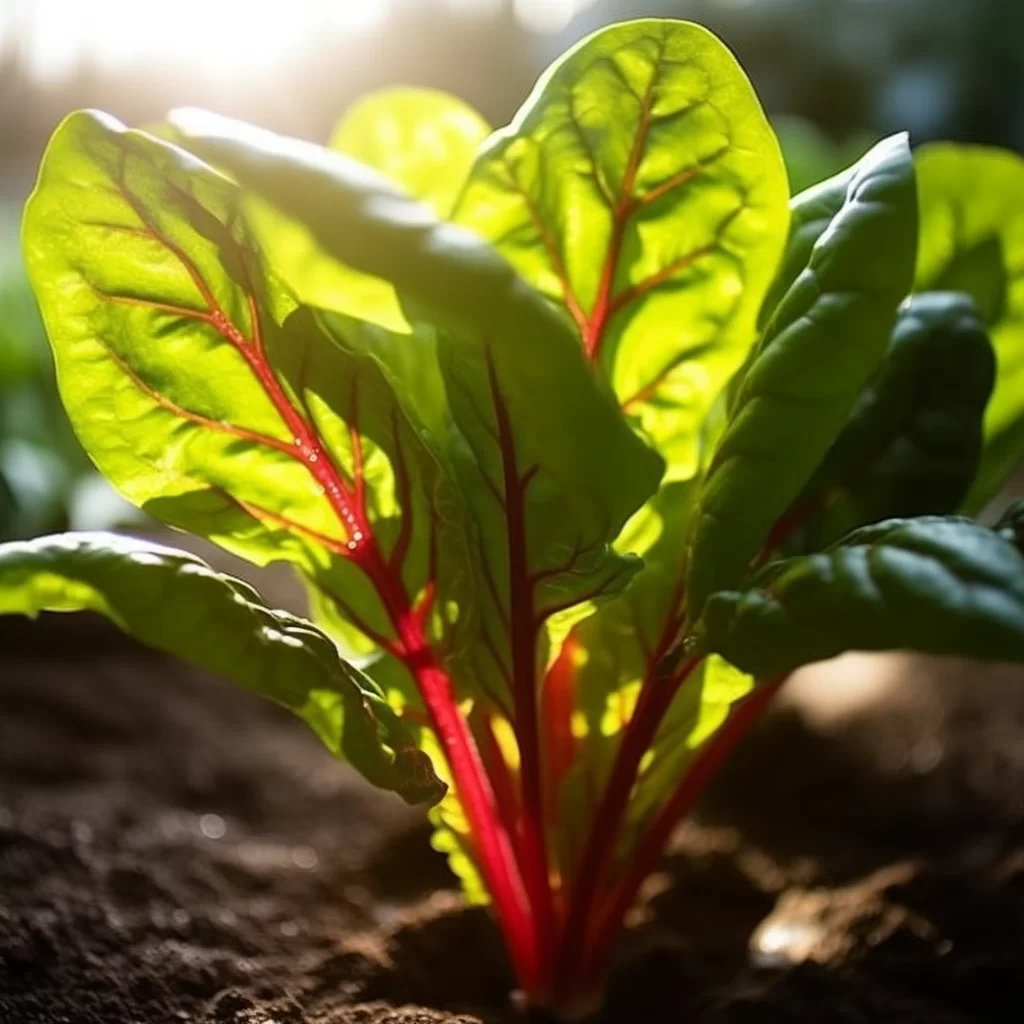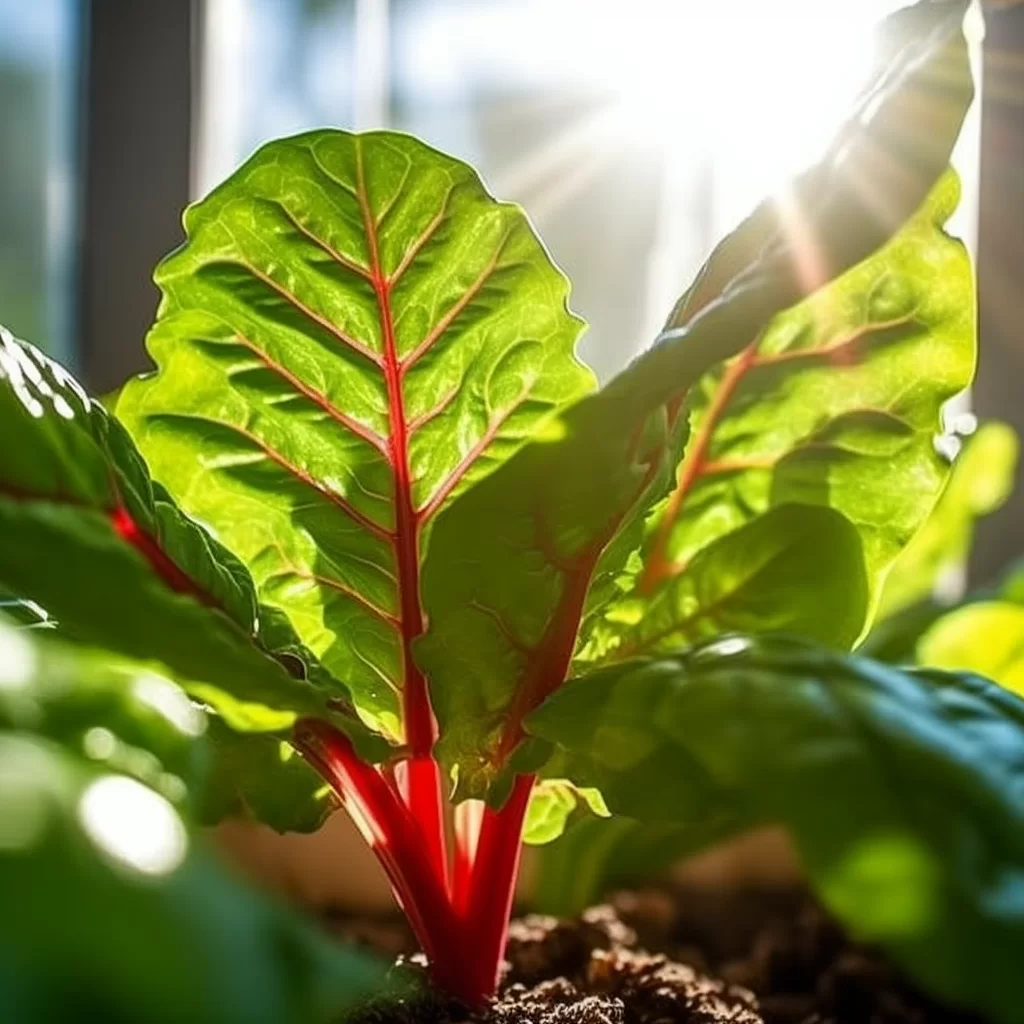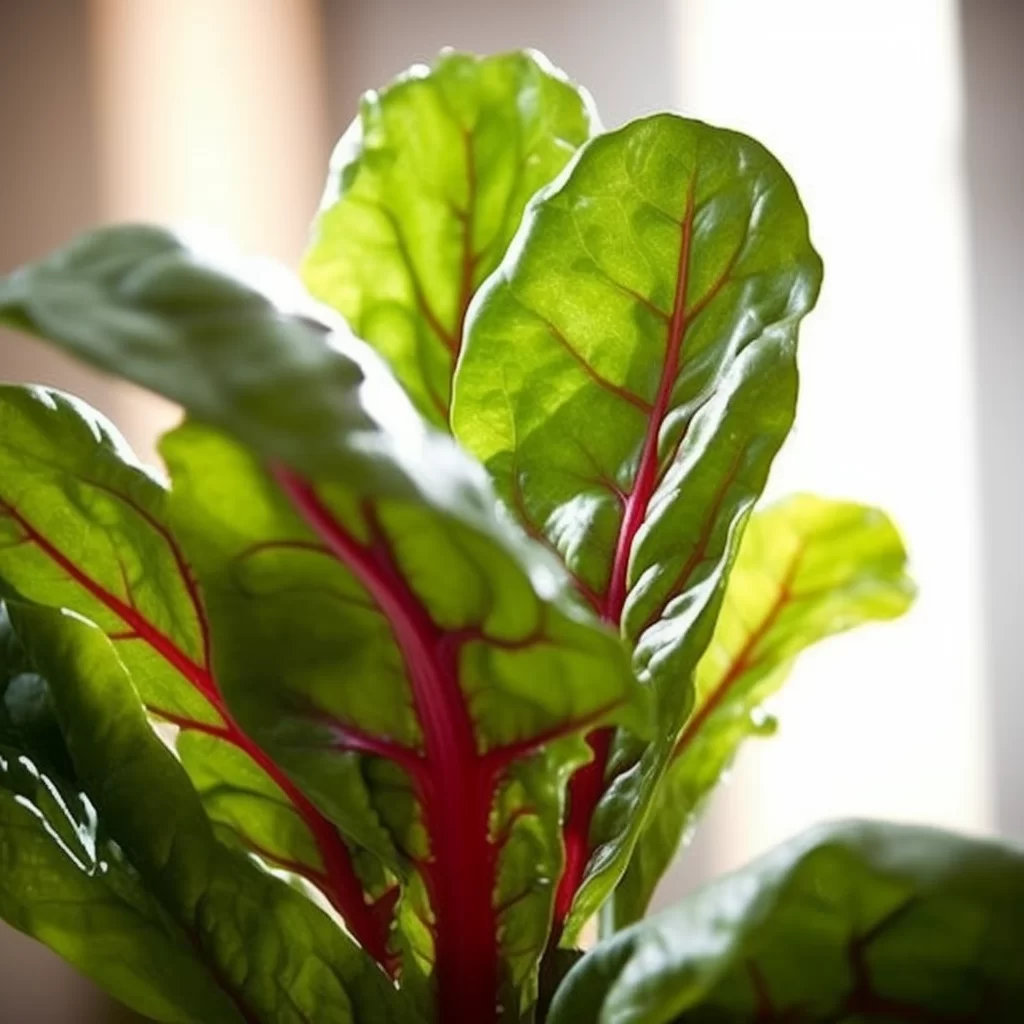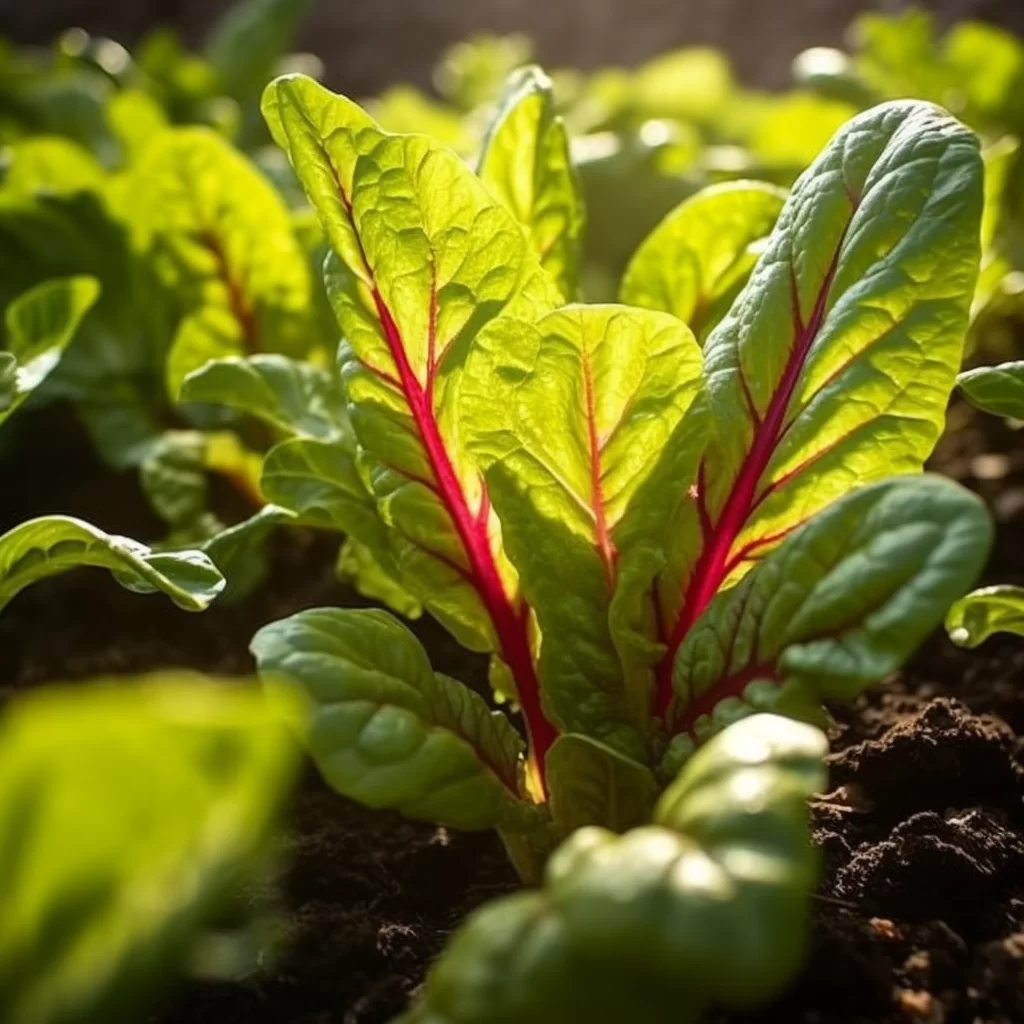Story of Day :
Contents
The Complete Guide and Care Tips for Swiss Chard Plants
Swiss chard, also known as silverbeet, is a leafy vegetable that is widely known for its delicious taste and high nutritional value.
This easy-to-grow plant belongs to the beet family and boasts large green leaves with glossy textures.
One of the most striking features of Swiss chard is its colorful stems that come in various shades ranging from white to yellow, pink, or red.
This vibrant plant can be a great addition to any garden or kitchen due to its versatility in cooking and numerous health benefits.If you are interested in growing Swiss chard plants, then there are some essential things you need to know about their care.
Swiss chard thrives in temperate climates but can grow well in various soil types as long it’s fertile and well-drained.
It requires regular watering during hot weather and proper fertilization throughout the growing season for optimal growth.
With proper care, your Swiss chard plants will provide you with an abundance of tasty greens that are rich in vitamins A, C, K as well as minerals such as iron and magnesium – all vital for maintaining good health!
Planting Swiss Chard
Swiss chard is a versatile vegetable that can be grown in either containers or outdoor soil.
When planting, it’s important to choose a location with well-draining soil that receives full sunlight exposure.
To ensure successful growth, the best time to plant Swiss chard is during early spring or fall when temperatures are cooler and more moderate.
Whether you’re new to gardening or have experience, Swiss chard is an easy crop to cultivate and can yield an abundant harvest. If you’re looking for a leafy green vegetable that’s easy to grow, look no further than Swiss chard.
If you’re looking for a leafy green vegetable that’s easy to grow, look no further than Swiss chard.
This nutritious veggie thrives in various growing conditions – whether you have limited space and need to grow it in pots on your balcony or have ample room outside for an outdoor garden bed.
Just be sure to select well-draining soil and plant your seeds during early spring or fall when temperatures are mild – this will ensure optimal growth and maximum yield potential.
Once harvested, Swiss chard leaves can be enjoyed sautéed as a side dish, blended into smoothies for added nutrients, or even used as a healthy alternative wrap for sandwiches!
- Select an area in your garden where the plant can receive at least six hours of sunshine every day.
- If you’re planting seeds directly into the ground, sow them about ½ inch deep into loosened soil beds about 12 inches apart from each other.
- If you’re starting seeds indoors before moving them outside avoid transplanting until after at least two sets of true leaves have sprouted which will take around four weeks depending on conditions.
- You could also start seeds outdoors by using pre-grown seedlings instead of sowing seeds directly into the ground itself.
Caring for Swiss Chard Plants
Taking care of Swiss chards is a pretty straightforward task that even those with limited gardening experience can handle.
These vegetables thrive in well-drained soil with a pH level between 6.0 and 7.0, so ensure you plant them in an area that meets these conditions.
Once established, Swiss chards do not require too much attention, but it’s vital to keep the soil consistently moist to avoid the roots from drying out and causing damage to the plants’ growth.
Additionally, applying organic fertilizers or compost around the base of each plant every two weeks helps maintain their overall health. Overall, caring for Swiss chards is relatively easy and requires minimal effort once they’ve been planted correctly and grown strong roots.
Overall, caring for Swiss chards is relatively easy and requires minimal effort once they’ve been planted correctly and grown strong roots.
Providing them with adequate moisture levels by watering regularly or employing drip irrigation will help keep your plants healthy while ensuring their leaves remain crisp and flavorful for all your culinary delights!
When it comes to taking care of plants, watering and fertilizing are two crucial activities.
Watering ensures that the plant has enough moisture to grow and sustain itself.
However, over-watering can lead to water-logging and root rot.
It is important to understand the specific needs of each plant, as some require more water than others.
Generally, it is best to water plants deeply once a week rather than lightly every day.Fertilizing provides essential nutrients for plant growth and health.
There are many types of fertilizers available in the market such as chemical fertilizers or organic ones like compost or manure.
Chemical fertilizers are usually faster acting but may also harm beneficial microbes in soil whereas organic ones take longer but improve soil health in the long run.
Over-fertilization can lead to excessive growth which makes a plant more susceptible to pests and diseases so it’s important not to add too much fertilizer at once.
Regularly feeding plants with appropriate amounts of fertilizer helps them thrive, produce more blooms/fruits, resist pests/diseases better while making them look lush green and healthy overall!
To maintain healthy Swiss chard plants, it is important to provide them with enough water but avoid over-saturating the soil during droughts.
Once your young plants have taken root, you can decrease your watering routine slightly.
It’s recommended to water the plants from their base instead of wetting their leaves as this may cause fungal infections.
Additionally, regular fertilization with a nitrogen-rich solution every few weeks will help ensure optimal growth and health. Swiss chard is a hardy vegetable that flourishes when given proper care and attention.
Swiss chard is a hardy vegetable that flourishes when given proper care and attention.
To ensure that they grow strong and vibrant, you must make sure that the soil remains moist without becoming waterlogged during dry spells in particular.
As soon as your seedlings have established themselves, it’s advisable to cut back on watering them slightly.
Wetting their foliage should be avoided since this could lead to fungal diseases; instead, pour water at the plant’s base directly for better results.
Moreover, providing nitrogen-rich fertilizer at regular intervals will promote healthy growth and overall well-being for your Swiss chard plants throughout their lifecycle.
Pruning
Swiss chard is a delicious and nutritious leafy vegetable that is easy to grow in your backyard garden.
Though it doesn’t necessarily require pruning, removing dead and yellowing leaves can benefit the plant in many ways.
Not only does it help promote new growth, but it also prevents the spread of diseases that can harm the plant and reduce its yield.
So, if you want to ensure your Swiss chard stays healthy and productive, don’t hesitate to remove any damaged or discolored leaves as soon as you notice them.With its vibrant green leaves and colorful stems, Swiss chard is not just a beautiful addition to any garden but also a versatile ingredient that can be used in countless dishes.
While pruning may not be necessary for this leafy vegetable, regular maintenance such as deadheading spent flowers or removing damaged foliage can go a long way towards keeping your Swiss chard healthy and ready for harvest.
Plus, by taking good care of your plants you’ll not only enjoy an abundant harvest but also get the satisfaction of knowing that you’re doing something good for yourself and the environment by growing your own food sustainably!
 When it comes to maintaining a healthy and thriving garden, pests and diseases can be major roadblocks.
When it comes to maintaining a healthy and thriving garden, pests and diseases can be major roadblocks.
Pests such as aphids, slugs, and snails can quickly damage plants by eating away at leaves or stems.
Similarly, diseases such as powdery mildew or black spot can spread rapidly among plants if left untreated.Preventing pests and diseases starts with proper plant selection and care.
Choosing varieties that are resistant to common pests in your area can help reduce the chance of infestations.
Keeping a garden clean by removing debris or fallen leaves can also eliminate breeding grounds for certain insects.
Additionally, monitoring plants regularly for signs of disease or damage allows for early intervention before the problem becomes too severe.If pest or disease problems do arise, there are several treatment options available depending on the severity of the issue.
Natural remedies such as insecticidal soap or neem oil can be effective against many types of pests without harming beneficial insects like bees or ladybugs.
For more serious cases, chemical sprays may be necessary but should always be used with caution to prevent harm to people, animals and the environment.Overall, preventing and managing pests and diseases is an important part of maintaining a healthy garden ecosystem that supports both plant growth and biodiversity in your outdoor spaces.
Swiss chard is a delicious and nutritious leafy green vegetable that is unfortunately prone to attack by a common pest known as aphids.
These small insects feed on the sap of the plant, causing severe tissue damage.
To get rid of them, farmers or gardeners should be careful not to harm beneficial insects, such as bees and ladybugs, by applying insecticidal soap or diatomaceous earth around the plants.
It’s important to take these steps in order to keep your Swiss chard healthy and viable for consumption.In addition to aphids, Swiss chard may also be susceptible to fungal diseases like rust and downy mildew.
The best way to prevent these problems from occurring is through proper watering techniques which can help keep the plant healthy and strong enough to withstand any potential infections.
It’s much easier (and cheaper) to avoid fungal diseases than it is trying to cure them once they’ve already set in; prevention really is better than cure when it comes Swiss chard farming or gardening! With some extra care and attention, you can enjoy a bountiful harvest of this nutritious vegetable all season long without any unwanted pests or diseases interfering with your bounty!
Harvesting Swiss Chard
Swiss chard is a leafy green vegetable that can be easily grown in your backyard garden.
If you’ve planted it during early spring, you can expect to harvest it within 50-60 days after planting.
However, if you plant it during late fall, the harvesting time reduces to around 30 days after planting.
To ensure that Swiss chard leaves do not become too tough or stringy, harvest the young outer leaves when they reach full size.
It’s important not to cut off all foliage because each plant needs enough of its foliage for photosynthesis.
Leaving at least one-third of each individual plant untouched ensures that growth potential is not stunted.When harvesting Swiss chard, it’s recommended to do so in the early morning hours when temperatures are cooler and milder as this will prevent exposing harvested produce directly into high temperature conditions which could cause damage or spoilage.
By following these simple guidelines, you can ensure a successful and bountiful harvest of delicious and nutritious Swiss chard from your garden throughout the growing season!
In Conclusion
Swiss Chards are great vegetables for both beginner gardeners and experienced gardeners alike .
While being relatively easy-to-grow , it requires minimal attention but observing proper care measures like adequate watering and fertilizing, pruning, and preventing pest infestations can help ensure a successful harvest.
With the above tips in mind, you can now grow your own Swiss chards as part of your home vegetable garden.